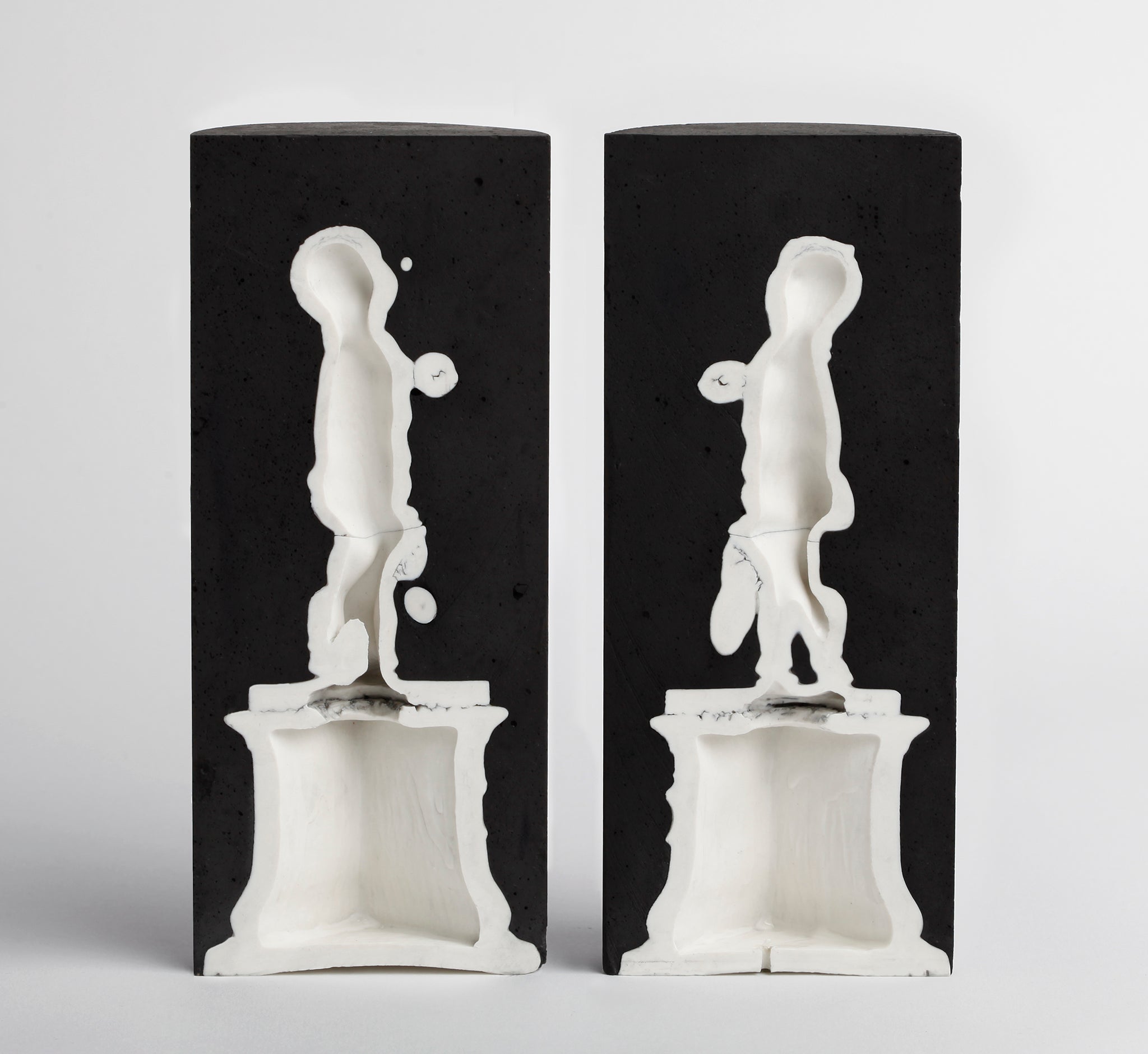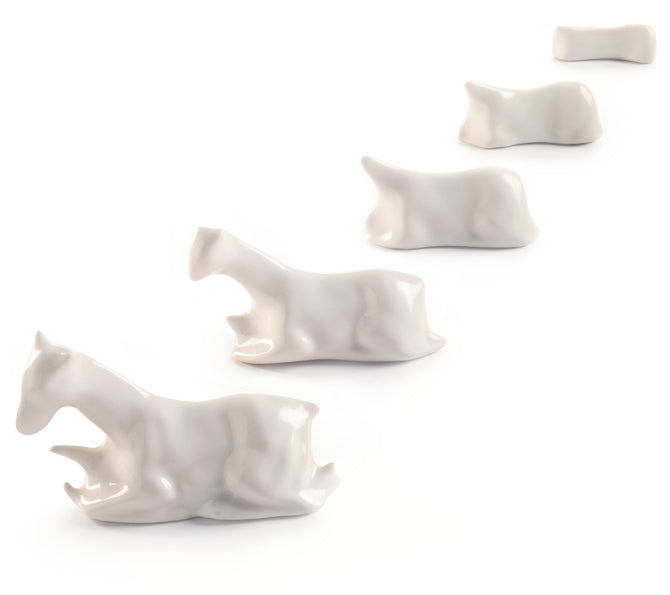QUARTZ
A line of crystal for Riedel/Nachtmann with over a quarter million pieces in global production to date

SANDBLASTED PORCELAIN
Featured in Dwell, Fast Company, LA Times, Craft, Design Sponge and Apartment Therapy. This project was a top Google image result for the word "plate" for many years.

EMPATHY FOR LAS VEGAS


In a city supposedly without culture, neon bending is the only local craft. These candlesticks were handmade by neon benders out of borosilicate glass, inspired by the Neon Boneyard in my hometown.
This project was originally designed for an ICFF booth sponsored by Herman Miller, and displayed at the Museum of Arts and Design in Manhattan.

FAIR TRADE DESIGN
Peruvian ceramics for SERRV INTERNATIONAL
SERRV, a global fair trade organization, wanted patterned “Peruvian looking” ceramics. This seemed impossible for an artisan group that could not glaze or make molds.
Most of the slums surrounding Lima have dirt roads, criss-crossed with tire tracks. After some time in the museums, I realized that the tracks looked remarkably like Pre-Columbian patterning.

So we went to a local llanteria...

...nailed some bike tires to some wooden boards...

....Raul Casahuaman hand-turned some bowls...

...and used the tires as stamps to make a print.

Raul experimented until he found a way to stamp the bowls without distorting them.

This collaboration gave SERRV the patterns they wanted while remaining honest to both past and present Peru.

.
SMOKED CHINA

Peruvian artisans spend their lives surrounded by imports from their greatest competitor. Cheap Chinese ceramics can be found all over Peru, seen below along the Amazon river in Iquitos and in urban Lima.

Before technology existed to glaze or make molds, Chulucan artisans smoked their pottery with mango leaves to give it color and make patterns.

I teamed with Chulucan artisan Ernesto Valladares to use this uniquely Peruvian technique on rival imports as a small act of cultural defiance.

We sourced ceramics from the central market in Lima and he smoked them in barrels until they were black.

The mango leaves seen on the left are the secret behind the technique, unique to that region and illegal to export. On the right, Valladares demonstrates how he buffs each piece after firing.


The silhouette of imported china is still obvious, now blackened into a Peruvian product.

Valladares' assistant Pablo Ceballos demonstrates the ancient Chulucan smoking process and I demonstrate my terrible Spanish accent:
THE AIR INSIDE

The Air Inside is a response to the boundaries created by the pandemic. I bought a set of Nymphenburg porcelain figurines, cast them in cement and sawed them in half to reveal the hollow inside. When you can't see the outside, the inside matters. It was only about air.
Because porcelain is hollow, the inside is a soft, abstracted version of the outside and because it has to be cast and built in parts, it has wonderfully strange little rooms and compartments. When I first started cutting porcelain, it shattered under the blade, which is why I began casting it in materials that could support it from breaking.



Quarantine was defined by physical boundaries around the air between us, by walls that made the inside air more dangerous, by masks that contained my air from yours—and a total renegotiation of how visible we were to the people we knew. The Air Inside is a response to those boundaries.

SHELLED PORCELAIN

Cast from the hollow inside of a porcelain figurine. Each is a cast of the inside of the previous figure.





Slip-cast porcelain is hollow, so the negative space inside of any figurine is a blurry version of what is seen on the outside.
By continuing the process of casting the negative space inside each figure, they are abstracted down to nothing.


EXISTENTIAL HOURGLASS
 Disguises how much time has passed or how much time is left.
Disguises how much time has passed or how much time is left.
.
